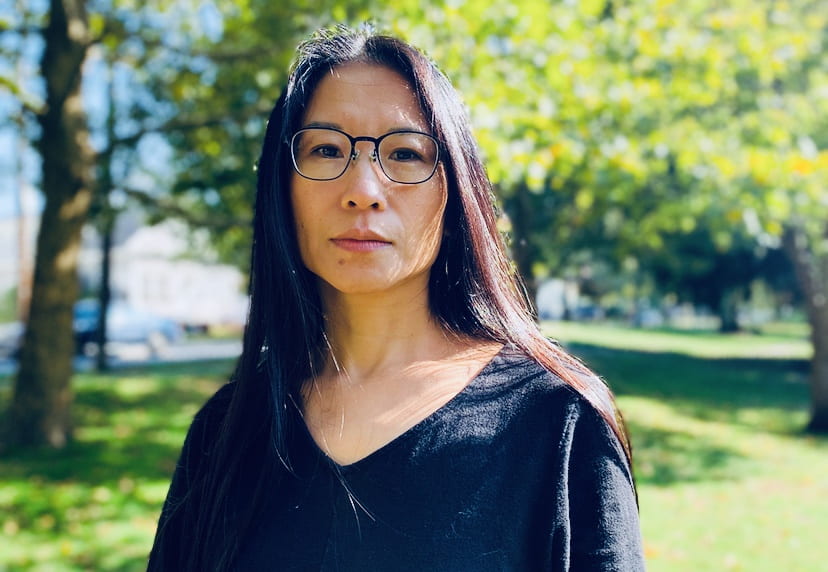March 11, 2022
Get to know award-winning author Dr. Chun Ye

Dr. Chun Ye’s most recent book, Hao, is a story collection that follows Chinese and Chinese American women in both China and the United States who turn to signs and languages to cross the alien landscapes of migration and motherhood. The book was a New York Public Library’s Best Book of 2021, a Lit Hub Best Book of 2021, an Electric Literature’s Favorite Short Story Collection of 2021, and was longlisted for the 2022 Andrew Carnegie Medal for Excellence in Fiction. An NPR reviewer praised the book, writing, “There’s not a story in Hao that’s anything less than gorgeous.”
Ye, an assistant professor of English who teaches in the Creative Writing and Asian and Asian American Studies programs, has an MFA in poetry from the University of Virginia and a doctorate in literature and creative writing from the University of Missouri.
Q: When and how did your relationship with creative writing begin?
Ye: My father introduced me to Tang poetry before I could read or write. I remember enjoying how the poems sounded to the ear and how the words felt on the tongue even though I couldn’t quite understand their meanings. In elementary school, I tried to write a poem in the style of the classical wuyan jueju (five-character quatrain). I can’t remember what I wrote, but the immersion and attentiveness I felt while I was writing has stayed with me and drawn me back to writing again and again. Throughout my adolescent years, I kept a journal and would occasionally write poems and stories. If there had been creative writing classes in my middle or high school, I would have surely taken them, but in my time, creative writing was not part of the curriculum. Later, I got a degree in English and then a job writing and translating for an English-language newspaper in Shenzhen. But I wanted to have more time to write creatively. That, along with the desire to travel, to see more of the world, prompted me to apply for writing programs abroad. I got in one in the U.S. and started to learn the craft of writing more consciously—and started to really think of myself as a writer.
Q: Your first books were volumes of poetry; how does your poetry inform your fiction, and vice versa?
Ye: Poetry for me is about being present. About staying in a moment and becoming spacious with it and conveying that spaciousness with the right words. When the moment is explicitly about a character in a particular situation, then I’m writing fiction. Though not quite the same as poetry, fiction writing calls for a similar kind of meditative presence. It involves the emptying out of preconceived ideas while tuning in to a more encompassing consciousness. In terms of language, I incorporate lyricism in my fiction—both on the sentence level, where I hope to put the best words in the best order, and on the global level, where I aim at a kind of rhythm that is poetic in nature.
Q: I’m also curious about your work in translation impacts your own writing and voice; do you write your first language or in English? Has the language you write in changed over time?
Ye: My practice in translation perhaps helps make my own writing more precise. In the past, much of my poetry writing had to do with self-translation: I translated drafts of a poem back and forth between Chinese and English to arrive at a draft that I believed to be the finest in terms of both sense and sound. Even though I now write directly in English, that habitual seeking for a kind of interlingual resonance and precision is probably still at work.
Q: Please tell us about the word Hao, the title of the collection as well as title of one of its most powerful stories.
Ye: Hao is the pinyin, or romanized spelling, of the character 好. It’s one of the most common words in Chinese, meaning good, well, okay, or as a verb, to love, to like. Before I looked up the oracle bone sign for the word, I had thought it was a compound of the character 女, meaning woman, and 子, man. What I found out was that the sign had been  , up to the ninth century BCE, depicting a kneeling figure, a woman, holding a child. I knew then that the sign in its original form would be the title of the book.
, up to the ninth century BCE, depicting a kneeling figure, a woman, holding a child. I knew then that the sign in its original form would be the title of the book.
The sign holds a myriad of connotations for me. Although kneeling was the proper sitting posture for ancient Chinese, regardless of gender or status, to represent women with this one posture seems to accentuate the social immobility of women, if not their deferential position. Holding, on the other hand, suggests fortitude, resilience, and connection. The sign altogether feels both sorrowful and triumphant. It’s big and generative enough to evoke the image of the earth holding all beings. It also invokes the Buddhist saying, “All beings have been our mother.” In that sense, all characters in the book, including the male and child characters, have maternal qualities within them.
Q: In addition to a traditional title, you’ve given each story an Oracle Bone sign as well. Could you explain the background of Oracle Bone Script and how you connected them to the stories?
Ye: While working on this book, which centers upon motherhood and language, I felt I was losing some of my Chinese. The Oracle Bone Script dates to the 12th century BCE and is the earliest known Chinese writing. To connect with this ancient writing felt like holding onto the language at its root. These signs also helped me think through questions about origin, creation, transformation, and tradition, all of which are related to motherhood as well.
For the co-titles of the stories, I choose signs that either signify the English titles or thematically echo them. For example, for the story “Crazy English,” I use the sign,  , meaning tongue, dramatized as a snake’s split tongue poking out of a mouth, to show the protagonist’s struggle with English acquisition and her difficulty to articulate her incoherent American experience.
, meaning tongue, dramatized as a snake’s split tongue poking out of a mouth, to show the protagonist’s struggle with English acquisition and her difficulty to articulate her incoherent American experience.
Q: Several of the stories are based in historical events in both the U.S. and China. Tell us about the research you did to write those stories.
Ye: The idea of motherhood is also related to questions about history, lineage, and legacy. I wrote the first historical piece, “A Drawer,” early on. It’s set in the 1940s wartime China and based on my maternal grandmother’s experience. My daughter cried much when she was an infant. There is the theory that in their preverbal stage, a baby carries memories of all their forebears or past lives. I felt as if my daughter was remembering and lamenting something with her inexplicable crying. I started to think about my maternal grandmother who had passed away when I was still a child. What life had been like for her, pregnant with my mother, while her husband fought in the war. She was also illiterate, unable to turn to a written language for solace, the way I tend to do. So I imagined her draw to invent a language for herself.
The story, “Signs,” follows up on the idea of drawing and invention. It’s a retelling of the creation myth of the Chinese written language, set in the semi-mystical Yellow Emperor era over 4,000 ago. I wrote motherhood into the legend to both honor and reconnect with the root of my mother tongue in a more intimate way.
The “Gold Mountain” story was among the last pieces I completed for the book. My paternal great-great-grandfather had come to the American West to build the transcontinental railroad across the Sierra in the 1860s. He stayed for two decades before returning to China. Though I don’t know much about his life except for a few basic facts, he was more than likely in San Francisco when the 1877 anti-Chinese riot took place. Living amid the recent violence against Asian and Asian American people, I saw many parallels between the past and the present. This story, not really based on my own ancestor, is an homage to a precursor immigrant mother who must find courage to claim a space in this country, something many of us continue to do.
As to research, I did it for most of the stories in the book, extensively in some cases. Research didn’t just help me get the facts right; it sometimes inspired where the stories were going. Actually, a couple of the stories would not have existed without research. For example, the title story, “Hao,” had its genesis in a passage from Peter Hessler’s Oracle Bones. A woman was asked to copy slogans during the Cultural Revolution and wrote one character wrong—万岁 to无岁 (ten thousand years to zero years). As a result, she was held in custody for five years. The episode haunted me until I had to face it and write the story.
Q: Other stories highlight violence and racism against Asian Americans, both in the past as well as in the modern day. These seem unfortunately very timely, given recent Asian American violence that led to the #StopAsianHate movement. What do you hope readers take from these stories about the Asian and Asian American experience?
Ye: I hope this book would add a few more narratives to the scant representations of Asian American experience, much of which has been written out of the nation’s past and present. I also intended to write against stereotypes. All my main characters in the book are Chinese or Chinese American women, who are often typecast as passive victims, or dragon ladies, or tiger moms. I didn’t want my characters to be reducible to categories. They are complex, just like Asian American experience is complex.
One thing I’d like to add here is that I was happy to develop and teach a new course to PC last fall — Introduction to Asian American Literature, which is crosslisted as English, Asian and Asian American Studies, and American Studies. Following the surge of hate crimes against the Asian American community during the pandemic, I designed the course to help students gain contexts of anti-AAPI racism while introducing them to Asian American literature. We read poetry, fiction, creative nonfiction, and graphic memoir by a diversity of Asian American voices. While appreciating the literary sophistication of these texts, we spent substantial amount of time exploring their historical, social, and geopolitical dimensions. At the beginning of the class, only a couple of students had heard of Angel Island or the Chinese Exclusion Act of 1882. Towards the end of the semester, students were researching and writing papers on complex topics such as institutional racism against Asian Americans, the deliberate erasure of Asian American experience from U.S. history and curriculum, and the model minority myth and its ramifications.
Q: As a faculty member in the Creative Writing Program, what is it like to nurture and cultivate young writers at PC?
Ye: There’re two main things I hope to cultivate in our young writers: attentiveness to language and complexity. When we read literary works, I draw our attention to words: what words are used and how they are put together to generate certain effects. I also point out examples of complexity so that we can examine how it’s achieved. I design writing exercises that encourage students to look at a topic from different angles. For example, one assignment I often have students do is “Seven Ways of Looking at XXX,” modeled after Wallace Stevens’ “Thirteen Ways of Looking at a Blackbird.” Students choose a subject matter they’re interested in and observe it in seven different ways, which helps them arrive at a more nuanced understanding of their subject while resisting simplification or generalization. I also frequently incorporate translation in my creative writing courses. Students try their hand at translating a poem from another language, which helps them pay more attention to the diction and syntax of English.
Another thing I hope to cultivate in our students is the practice of free writing. For me, the fun of writing comes largely from the act of writing itself and much of the writing process has to do with free writing. I think of free writing as an act of “wuwei,” to borrow the Daoist term. It’s a state of being largely free from conceptions, expectations, or strivings. It’s just focusing on a moment and putting down whatever comes to mind. It’s a kind of whole-hearted presence where we can access what we do not know we know.





